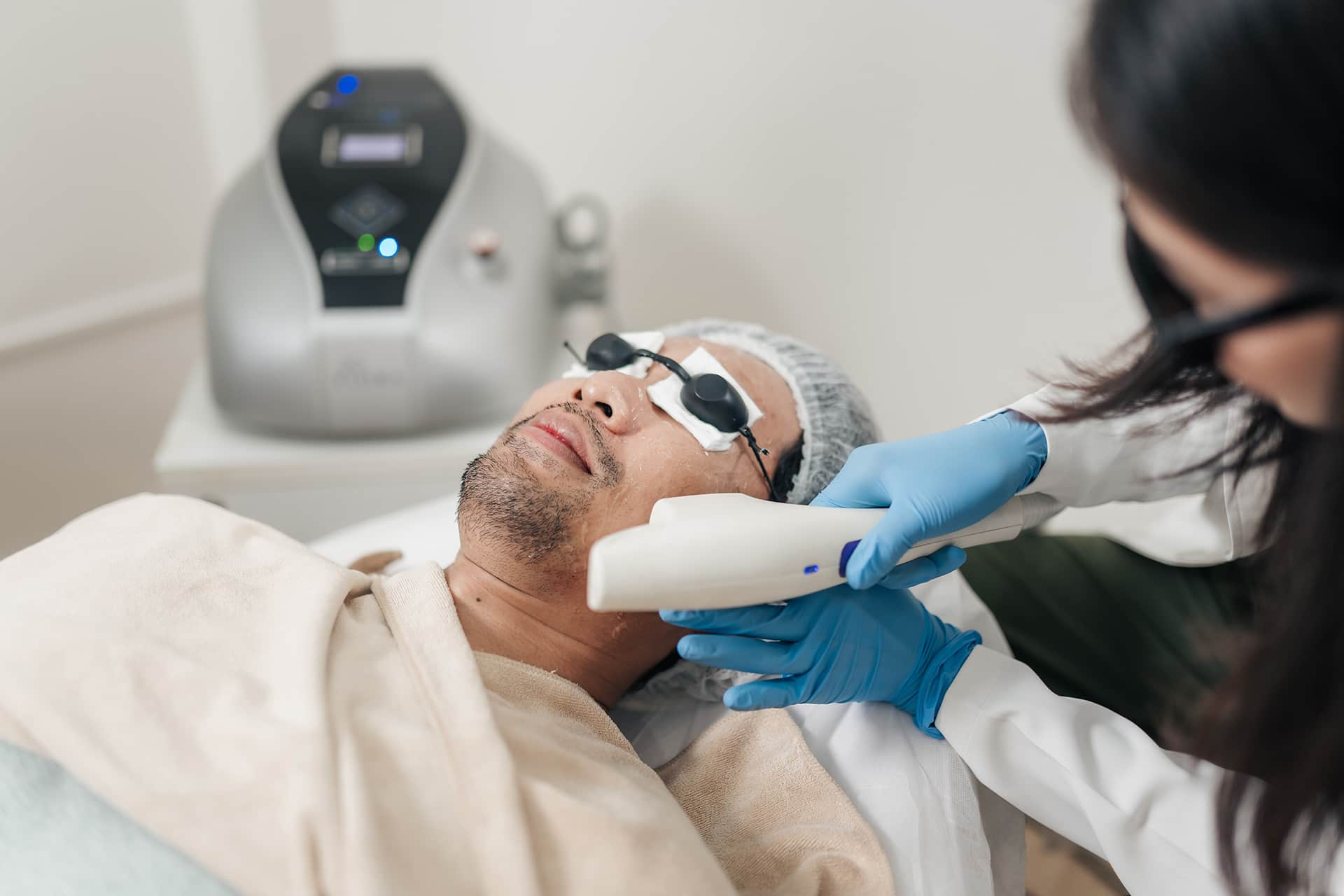Subscribe to our newsletter
Your monthly dose of health and wellness is just a click away.

Have your eyes been feeling dry, gritty, or irritated? Over 16 million Americans are estimated to have dry eye disease, and more are being affected due to screen time, air conditioning, and other common causes of dry eyes.
When eye drops or warm compresses aren't enough, it might be time to consider in-office treatments. Two popular options are iLux and IPL therapy. So, what's the difference? And which one is better for your eyes?
Let’s explore everything you need to know about iLux vs IPL and how each one works to bring lasting relief.
The iLux treatment is a quick, in-office procedure designed to relieve dry eye symptoms caused by meibomian gland dysfunction (MGD).
It uses a handheld device to apply heat and pressure to your eyelids, helping to clear out clogged oil glands. These glands, located in your eyelid margins, are responsible for producing the oil layer of your tear film. When they are blocked, your tears evaporate too fast, causing discomfort.
The device gently warms the eyelids and then expresses the glands to restore normal gland function. This process helps your eyes stay moist naturally.
iLux Alcon developed this tool with both comfort and effectiveness in mind. Treatment takes about 8–12 minutes per eye.
IPL, or Intense Pulsed Light therapy, is another proven treatment for MGD. Originally used in skin therapy, IPL is now also used to treat inflammation around the eyes, especially the lower eyelids.
The doctor uses a device that sends pulses of light to the skin near your eyes. This reduces inflammation, improves gland function, and even helps kill bacteria and mites on the skin that can worsen dry eye symptoms.
Intense pulsed light | iLux both work on oil gland health, but IPL treats skin inflammation and redness too, which may help patients with rosacea or eyelid inflammation.
Treatment usually takes around 15-20 minutes and is done over several sessions.
When it comes to iLux vs IPL, the best choice depends on what’s causing your symptoms.
|
Feature |
iLux |
IPL |
|
Works on |
Blocked oil glands |
Inflammation + gland health |
|
Method |
Heat + pressure |
Light pulses |
|
Time per session |
8–12 mins per eye |
15–20 mins total |
|
Number of sessions |
1–2 |
3–4 on average |
|
Comfort |
Mild warmth |
Mild stinging during treatment |
So, which one is better: IPL or iLux?
If your main issue is blocked oil glands, iLux may offer fast relief. If your dry eye symptoms are tied to skin inflammation, IPL could be a better match. Some patients even benefit from using both over time.
The IPL dry eye treatment cost in the USA varies by clinic and region. On average, you can expect to pay:
It may seem costly, but for many, it's worth it to finally reduce dry eye symptoms without constant use of artificial tears.
Looking for iLux treatment near me? Many eye clinics and dry eye centers now offer this office treatment.
Here’s how to find a provider:
LipiFlow is another option that works similarly to iLux. Both use heat and pressure to treat meibomian gland dysfunction, but LipiFlow is fully automated.
Both iLux and IPL are considered safe. However, mild side effects may happen:
Your doctor will explain any risks based on your eye health and skin type.
If you're not ready for in-office care yet, or looking to maintain results, consider using the Best Eye Steamer for dry eyes at home.
A good quality eye steamer helps:
Always ask your eye doctor before trying any new dry eye treatment.
Living with dry eyes can make daily life exhausting. Whether it’s screen time, climate, or age, more people are seeking real solutions beyond eye drops.
Treatment for Dry Eyes with iLUX & IPL is changing how we care for our eyes. These options go to the root of the problem rather than just masking it.
Whichever you choose, always remember: lasting relief is possible. And your eyes deserve it.

If you've ever stepped out of a nice, hot shower only to feel your eyes sting or burn, you're not ...
READ MORE
If you've ever stood in front of a mirror late at night, rubbing your tired, itchy eyelids and wondering why ...
READ MORE
If you've been struggling with dry eyes while working on your laptop, you know how frustrating it can feel. By ...
READ MORE
Did you know that over 16 million Americans suffer from chronic blepharitis and dry eye issues each year? For many, ...
READ MORE
You wake up, rub your eyes, and feel that same gritty, burning sensation again. By lunchtime, your eyelids feel heavy ...
READ MORE
You're sitting at your desk, staring at your computer screen. After a while, your eyes start to sting. You rub ...
READ MORE
Have your eyes been feeling dry, gritty, or irritated? Over 16 million Americans are estimated to have dry eye disease, ...
READ MORE
Have your eyes felt itchy, irritated, or crusty around the lashes lately? You might be dealing with blepharitis, a common ...
READ MORE
Have your eyes been feeling dry, itchy, or tired lately, especially after long hours on screens? Millions of people are ...
READ MORE
Did you know that over 16 million Americans suffer from dry eye disease? That's nearly 1 in 20 people. And ...
READ MORE
If you have dealt with the annoying condition of itchy eyelids or crusty buildup near your eye lashes, then you ...
READ MORE
The condition of dry eyes is increasing every year, according to NIH, the prevalence ranges from around 5-50% depending on ...
READ MORE